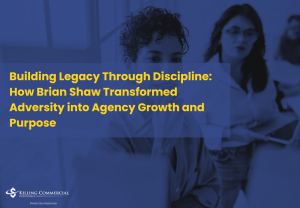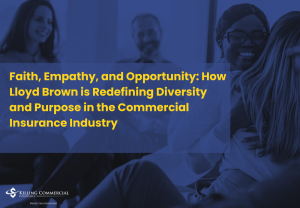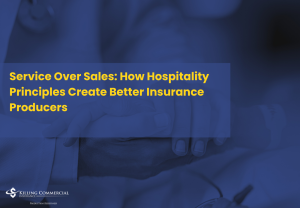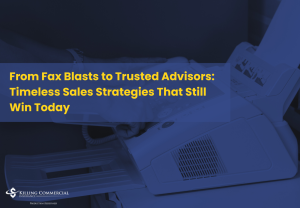Harnessing AI in Insurance: Automation, Workflow Efficiency, and Document Intelligence

The landscape of commercial insurance is evolving at an unprecedented pace. As agencies strive to serve middle-market clients more effectively, many find themselves asking: how can we harness the power of AI in insurance to streamline operations, reduce errors, and free up producers for high-value tasks?
In this deep dive, we’ll explore the two fundamental pillars of AI—generative and analytical—outline practical steps for embedding automation into repeatable workflows, examine real-world case studies, and offer guidance on security, vendor selection, and change management. Whether you’re a curious producer or an operations leader, this post will give you actionable insights to start small and build momentum toward a more efficient, technology-enabled future.
This general session featured insights from Pranav Pasricha, Colby Tunick, Joseph Ems & Nick Ayers.
The AI Hype Cycle in Insurance
When you hear “AI,” do you feel both excited and overwhelmed? The term can seem like a buzzword, often conflating everything from simple macros to cutting-edge machine learning. Yet, beneath the hype lies genuine potential. Many agencies under-utilize AI tools, limiting them to ad-hoc tasks like drafting marketing emails or generating social media images. Meanwhile, others rush headlong into large-scale projects without a clear process, only to be disappointed by inconsistent results.
AI today behaves much like an intern: it can tackle repetitive tasks but still requires human oversight. Producers and non-licensed staff must validate outputs, ensuring accuracy and compliance. This “intern” analogy emphasizes that trust in AI is built through transparency—publishing accuracy metrics, securing SOC 2 certification, and integrating clear audit trails. By recognizing both the promise and limitations of AI, agencies can navigate the hype cycle more prudently, moving from experimentation to impactful, enterprise-scale deployments.
Two Pillars of AI for Insurance
AI in the insurance sector generally falls into two distinct categories: Generative AI and Predictive & Analytical AI (Document Intelligence). Understanding the differences and applications of each is crucial for driving immediate and sustainable ROI.
Generative AI
Generative AI tools—such as large language models (LLMs) and image generators—excel at creating new content from prompts. Common use cases include:
- Drafting Client Communications: Automating the creation of renewal reminder emails or personalized outreach messages can save producers significant time.
- Marketing & Social Media: Generating promotional graphics or blog summaries helps marketing teams maintain a consistent brand voice.
- Conversational Bots: Implementing chatbots that guide prospects through basic policy questions or website navigation.
While generative AI can accelerate creative tasks, it also poses risks. “Hallucinations”—instances where the model fabricates information—can damage brand credibility if left unchecked. To mitigate this, agencies should implement approval workflows where human editors review and refine AI-generated content before distribution.
Predictive & Analytical AI (Document Intelligence)
Predictive and analytical AI focuses on extracting insights from structured and unstructured data, often referred to as document intelligence. In insurance, these tools address:
- Automated Renewal Quoting: By training AI models on historical rating data, agencies can generate renewal quotes in minutes rather than hours.
- Policy Comparison: AI can parse dozens of pages across multiple carrier forms, flagging discrepancies in coverage, limits, or endorsements.
- Risk Scoring: Leveraging predictive models to assess client risk profiles based on claims history, financial metrics, and industry trends.
These applications deliver immediate ROI by reducing cycle times and minimizing manual errors. Document intelligence tools become most powerful when seamlessly integrated into producers’ existing workflows—transforming data entry from a chore into an automated, validated process.
Embedding AI into Repeatable Workflows

The key to successful AI adoption isn’t flashy demos—it’s embedding automation into well-documented, repeatable workflows. Follow these steps to ensure your pilot projects deliver measurable improvements:
- Identify Friction Points
Begin by mapping out current processes and pinpointing the most time-consuming tasks. Common candidates include:- Completing Accord applications
- Filling out carrier sub-applications
- Manual data entry from spreadsheets or PDFs
- Document with Checklists
Before introducing AI, create detailed checklists outlining each step of the process. Often, standardizing workflows yields significant gains on its own. According to one panelist, “If you ever have a question, ‘Do I need AI to solve this?’ nine out of ten times, the answer is no—you probably just need checklists.” - Pilot with Narrow Scope
Choose one high-volume process—such as renewals—and apply an automation tool. Measure baseline cycle times and error rates before the pilot. - Validate and Iterate
Treat AI outputs like an intern’s work: review, correct, and feed those corrections back into the system. Track accuracy metrics such as true-positive and false-negative rates. - Scale Gradually
After demonstrating efficiency gains and reliability, expand AI to adjacent processes. Maintain documentation and continue measuring KPIs like average processing time, number of manual touches, and producer satisfaction.
Case Studies: Real-World AI Applications
The theoretical benefits of AI become tangible when viewed through the lens of real agency implementations. Below are three case studies presented during our panel.
Refocus Automated Renewals
Challenge: Producers were spending 95 minutes per renewal, manually re-entering data into carrier raters.
Solution: By integrating a predictive AI engine trained on previous renewal data, the agency automated quote generation.
Result: Average renewal time dropped to 20 minutes—a 79% reduction. Producers redirected their saved time to client outreach and cross-selling, leading to a measurable increase in retention rates.
Sembly Unified Intake
Challenge: Agencies often juggle multiple Accord forms, sub-apps, and supplemental questionnaires.
Solution: Sembly’s AI-driven intake tool consolidated ten different forms into a single, guided questionnaire. Users upload existing spreadsheets or PDFs; the AI parses the data and auto-populates relevant fields.
Result: Intake efficiency improved by 65%, and data accuracy rose by 30%. Producers reported spending less time chasing missing information and more time on consultative conversations.
Blue Pine Policy Comparison
Challenge: Comparing quotes from multiple carriers required hours of manual review—reading through dense policy language to spot coverage gaps or limit differences.
Solution: Blue Pine’s document intelligence platform ingests PDF binders and highlights discrepancies line by line.
Result: What once took three hours now takes under 15 minutes. Human underwriters focus only on AI-flagged exceptions, improving overall accuracy and reducing overlooked errors.
These case studies demonstrate how targeted AI pilots can transform specific workflows, delivering both time savings and quality improvements.
Ensuring Trust: Security, Accuracy, and Compliance

Adopting AI at scale requires more than impressive demos—it demands a foundation of trust. Agencies should prioritize:
- SOC 2 Compliance
As our panel emphasized, security is table stakes. Request vendors’ SOC 2 Type II reports to ensure data protection, encryption standards, and operational controls meet industry best practices. - Accuracy Metrics
Don’t accept vague assurances. Ask vendors for their true-positive, false-positive, and false-negative rates on your specific data sets. Transparency on performance benchmarks helps set realistic expectations. - Auditability
Ensure AI outputs include provenance data—timestamps, source documents, and transformation logs—so producers and compliance officers can trace decisions back to raw inputs.
By embedding these governance measures, agencies build confidence among producers, leadership, and clients that AI-driven processes are secure, accurate, and compliant.
Vendor Selection and Market Appetite
With a clear understanding of needs and governance, the next step is selecting the right AI partners. Consider the following evaluation criteria:
- Security & Compliance
Verify SOC 2 compliance, data encryption, and privacy safeguards. - Proven Accuracy
Request performance metrics specific to your use cases—renewals, policy comparison, or intake. - Ease of Integration
Look for vendors offering open APIs, pre-built connectors to common agency management systems, and minimal setup time. - Customer References
Peer referrals are invaluable. Ask industry colleagues for firsthand experiences, including implementation challenges and support responsiveness. - Total Cost of Ownership
Evaluate subscription fees, implementation charges, and ongoing support costs. Compare in-house vs. third-party solutions to find the optimal balance between control and convenience.
Finally, gauge your agency’s market appetite for AI. Start with smaller, less regulated lines to build confidence before tackling complex commercial risks.
Preparing Your Agency for AI Adoption
Technology is only as effective as the people who use it. To foster a culture of innovation:
- Training & Change Management
Develop role-based training programs for non-licensed staff and producers. Encourage “sandbox” environments where users can experiment without fear of errors affecting live policies. - Governance Structure
Form an AI oversight committee with representatives from operations, compliance, IT, and sales. Define usage policies—what tool to use for which process, approval workflows, and escalation paths for anomalies. - KPI Tracking
Establish success metrics such as average processing time, manual touchpoints eliminated, and producer satisfaction scores. Review these quarterly to identify areas for improvement. - Communication & Feedback Loops
Share success stories and champion wins in internal newsletters or town halls. Solicit feedback regularly to refine workflows and tool configurations.
By aligning people, processes, and technology, agencies can transform AI pilots into enterprise-wide capabilities.
Looking Ahead: The Future of AI in Middle-Market Insurance
The journey has only begun. Emerging trends on the horizon include:
- Embedded Insurance
AI-powered risk assessments at the point of sale—integrating coverage offers seamlessly within customer journeys. - Advanced Predictive Modeling
Leveraging alternative data sources (IoT sensors, satellite imagery) for more granular risk scoring and dynamic premium adjustments. - Augmented Underwriting
Combining AI-driven insights with underwriter expertise through collaborative workspaces—accelerating decision cycles without sacrificing judgment. - Continuous Learning Systems
Self-improving models that retrain on new submission data, claim outcomes, and market trends to boost accuracy over time.
As technology evolves, the role of the producer will continue to shift from data entry toward strategic advisory, relationship management, and risk consulting. Agencies that build strong foundations today—process documentation, governance, and pilot successes—will be best positioned to capitalize on tomorrow’s innovations.
Conclusion
Implementing AI in middle-market insurance is not a question of if, but when and how. By focusing on process first, technology second, you can unlock significant efficiency gains and elevate your producers to higher-value activities. Start by mapping your most tedious workflows, standardizing with checklists, and piloting automation in narrow scopes. Measure outcomes rigorously, enforce security and compliance standards, and expand strategically. With the right governance, vendor partnerships, and change management, AI will transform from a buzzword into a competitive advantage—empowering your agency to deliver faster, more accurate service and positioning your producers as trusted advisors in an increasingly complex market.

Building Legacy Through Discipline: How Brian Shaw Transformed Adversity into Agency Growth and Purpose
Brian’s journey isn’t one of shortcuts or overnight success. It’s the story of a man who has faced battlefields, boardrooms, and hospital beds — and come out the other side with an unshakable sense of purpose. His agency is young, his vision is clear, and his “why” runs deep.

Becoming the AI-First Agency: How Insurance Producers Can Leverage Automation to Outpace the Competition
Artificial Intelligence is no longer a buzzword for tomorrow. It’s today’s most powerful tool for increasing efficiency, lowering costs, and growing your book of business faster than ever before. For insurance producers and agency owners, this isn’t a matter of curiosity or a “nice to have” anymore. It’s a necessity. The reality is that your competition may already be using AI-powered tools to identify prospects, streamline service, and close deals before you even realize you’re in the game.

Faith, Empathy, and Opportunity: How Lloyd Brown is Redefining Diversity and Purpose in the Commercial Insurance Industry
In every season of The Protege, one thing becomes crystal clear—success in the commercial insurance industry isn’t about where you start, it’s about who you become.
In this episode of the Power Producers Podcast, I sat down with Lloyd Brown, a middle market producer from Orlando, Florida, whose story is equal parts faith, resilience, and purpose.

Why Being Liked Is Killing Your Sales: Mastering the Psychology of Closing
Salespeople are often taught to be charismatic, friendly, and well-liked. But as David Carothers and high-ticket sales expert Austin Medlin explore in their recent conversation, that mindset could be the very thing sabotaging your close rate. Austin, the founder of CloseSales.com, brings a fresh perspective from outside the insurance industry that perfectly aligns with what commercial producers face daily: buyers who need leadership, not another friend.

Service Over Sales: How Hospitality Principles Create Better Insurance Producers
That idea sits at the heart of a powerful conversation I had with Joe Hollier, better known as Mr. Hotel, on the Power Producers Podcast. Joe’s story is one that every producer can learn from. He started his career in hospitality, spent two decades working in restaurants and hotels, and eventually found his way into insurance. What he brought with him from hospitality turned out to be his biggest competitive advantage — the ability to understand people.

From Fax Blasts to Trusted Advisors: Timeless Sales Strategies That Still Win Today
In the fast-paced world of commercial insurance, new trends and technologies seem to emerge daily. But some strategies stand the test of time—particularly when they’re rooted in deep client empathy, practical experience, and a commitment to legacy. In this post, we reflect on insights shared by Kevin Ring from the Institute of WorkComp Professionals during a recent Power Producers Podcast. Kevin joined David Carothers to honor the contributions of industry legend Preston Diamond and explore how his wisdom still applies in today’s sales landscape.

Responses